Affiliate links on Android Authority may earn us a commission. Learn more.
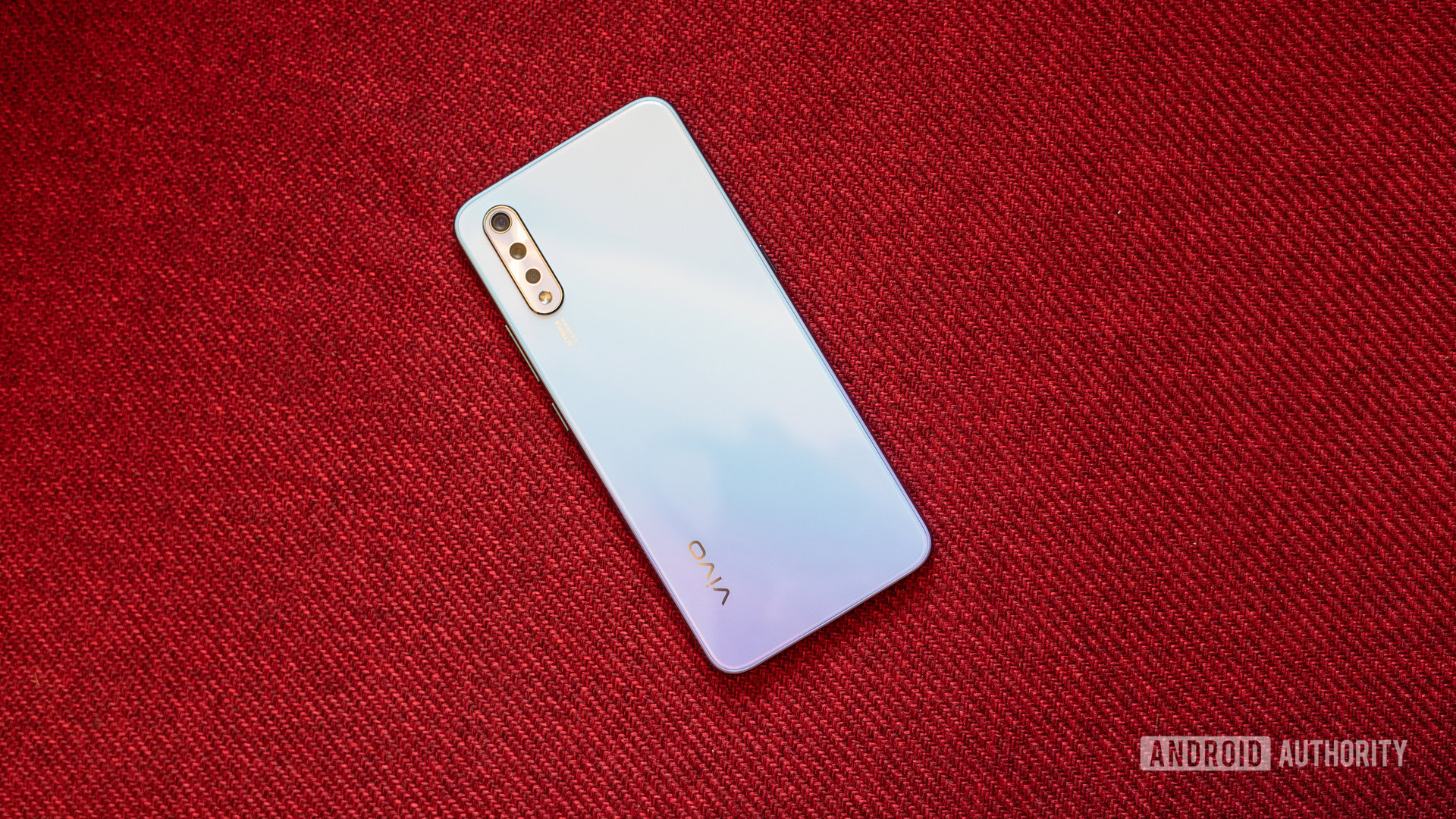
vivo S1 review: Good looks aren't enough to save this phone
Published onAugust 14, 2019
Vivo S1
What we like
What we don't like
Our scores
Vivo S1
Slowly and steadily, vivo has been pumping out hardware across price segments. In the lucrative mid-range segment, vivo now has multiple devices that cater to all sorts of users, from performance seekers to those looking for a gigantic battery. The vivo S1 is an attempt to woo the fashion-conscious audience with its focus on design.
The big picture
While Xiaomi might rule the roost in India’s massive mid-range market ($150 to $300), vivo has been making inroads thanks to consistent and comprehensive marketing. With an 18% share of the market in India, according to Canalys, the company was the third-largest player in Q2 2019.
The vivo S1 is an all-new, design-focused series that takes aim squarely at the realme X and Redmi Note 7 Pro. Priced within spitting distance of each other, the realme combines design with an excellent camera while the Redmi delivers solid performance and a great overall experience. With that in mind, it remains to be seen if design and a high-resolution selfie camera is enough for the vivo S1 to take on the competition.
What’s in the box
- Headphones
- TPU case
- 18W fast charger
- SIM tool
The vivo S1 ships with a full-featured package that includes all the essentials to get you started. The box includes a pair of earphones, a TPU case, as well as an 18W fast charger. A SIM ejector tool and relevant manuals are also boxed with the phone.
Design
- 159.53 x 75.23 x 8.13mm
- 179g
- Schott Xensation 3D Glass
- Plastic build
vivo is playing up the aesthetics card with the S1. A visually striking piece of kit, it manages to stand apart from Xiaomi and realme’s offerings through its unique take on gradients and patterns.
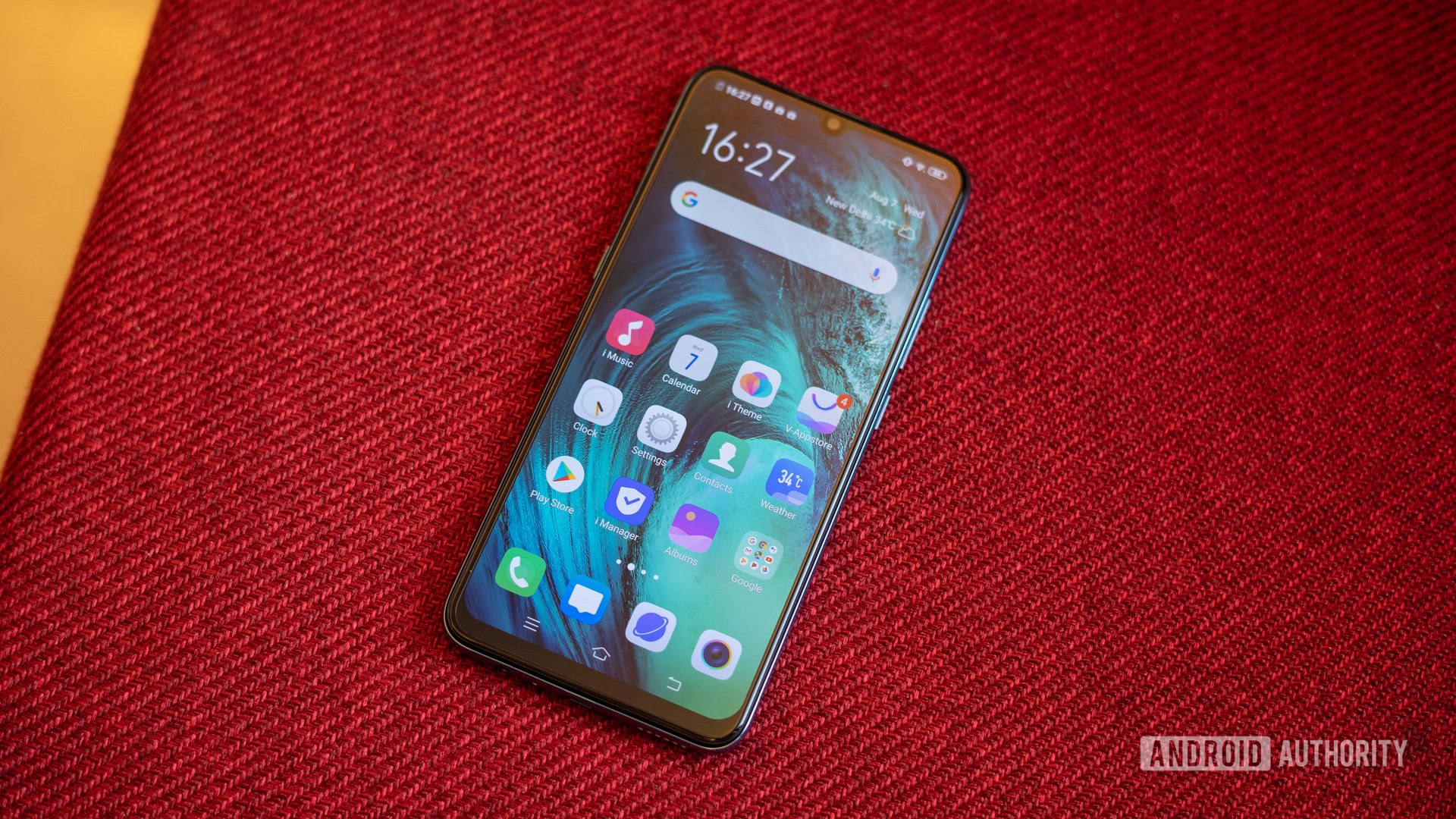
The front of the phone is conventional, with a large display and waterdrop notch serving as the key visual elements. Bezels along the sides are fairly small but the chin detracts from the otherwise unblemished fascia. Gorilla Glass is fairly common and so is Asahi’s Dragontrail glass, but this is the first time we’re hearing of Schott Xensation 3D protective glass. In my time with the phone, the glass seemed to hold up well against micro-abrasions and scratches, but it remains to be seen how well it manages over long term use.
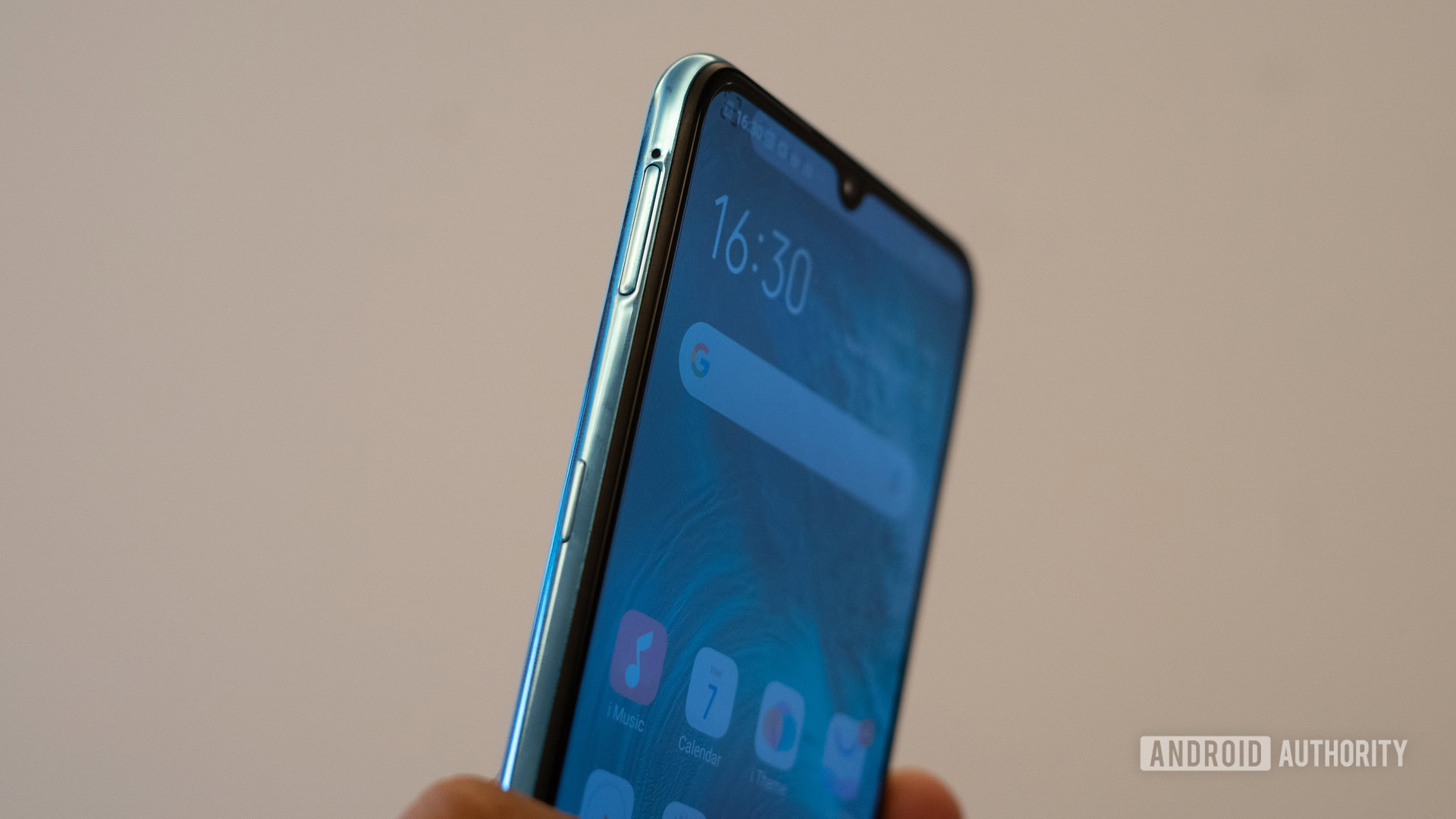
Fit and finish aren’t quite top-notch and I noticed significant wobble in the volume rocker. The power button, on the other hand, had sufficient give. Along the bottom edge is a headphone jack, speaker grille, as well as a microUSB port (ugh). A dedicated Google Assistant key is a surprising, but welcome, addition. There’s also a triple slot that will let you house two SIM cards and a microSD card. The phone employs an in-display fingerprint scanner that was generally fast and reliable.
The back of the phone is where the design gets a bit more interesting. We’ve got the Skyline Blue variant with us and the milky blue and purple finish looks rather good. It certainly stands out amongst a sea of aggressive blues and reds.
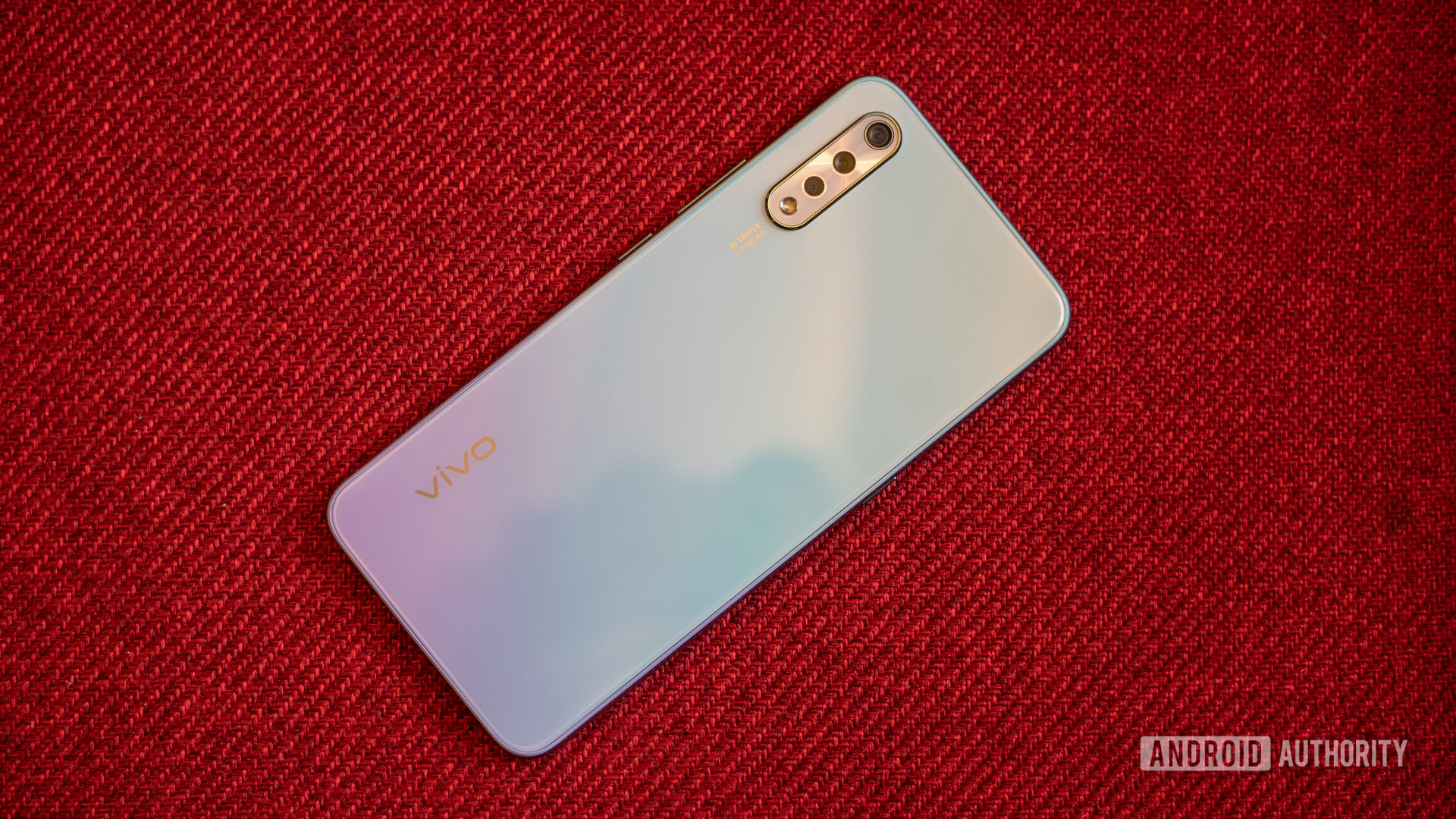
Unfortunately, the entire construction is plastic and it shows. The phone comes across as built to a cost. From the glossy, fingerprint-prone back to the polycarbonate mid-frame, the entire construction tends to look a bit cheap. For what’s supposed to be a premium mid-range smartphone, this isn’t quite the best look. With the competition stepping up its game in terms of materials and finish, the vivo S1 certainly isn’t able to match up. With the mid-range positioning, the phone lacks any sort of IP rating. The vivo S1 does not claim to have a p2i coating either, which means you should be particularly careful when using your phone around water.
Display
- 6.38-in Super AMOLED
- Full HD+
- 19.5:9
The vivo S1 packs a fine display that punches above its weight. The screen looks great and offers excellent saturation levels. The resolution doesn’t break new ground, but it is perfectly adequate on a 6.38-inch display. Text and images look tack sharp.
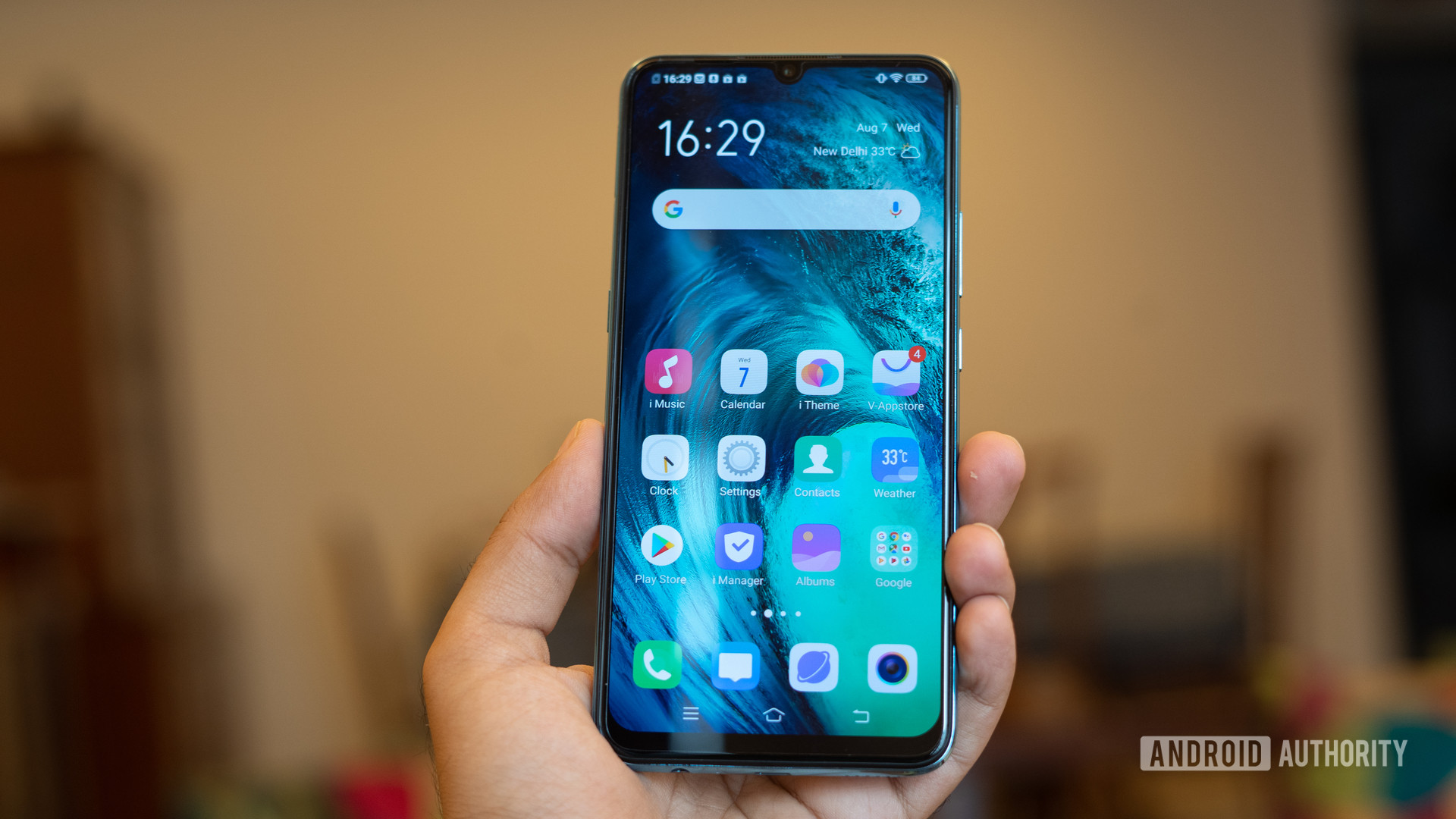
The default mode has a very prominent blue tinge and content looks just a bit too cool for my preference. Switch over to the oddly named Normal mode and the color temperature edges towards accurate. Maximum brightness, at over 400 nits, is sufficient for outdoor use and the phone continues to be visible in bright sunlight.
The hard plastic screen protector catches on fingertips and is hard to remove.
vivo has installed a hard plastic screen protector on the S1, but the sharp edges on it tend to catch on to your fingertips as you swipe across the screen. The rather thick screen protector is glued tightly to the display and removing it is an exercise in frustration.
Performance
- Helio P65
- 2 x 2.0GHz Cortex A75, 6 x 1.7GHz Cortex A55
- Mali G52 GPU
- 128GB built-in storage
Sporting the recently announced Helio P65 processor, the vivo S1 is among the first to run MediaTek’s latest silicon. It would be hard to call the chipset an upgrade over the Helio P60. It is … different … for lack of better words. Unlike the Helio P60, which balanced performance between Cortex A73 and Cortex A53 cores, the Helio P65 pairs two Cortex A75 cores with six Cortex A55 cores. The biggest difference here is that multi-threaded performance is a bit of a downgrade. The GPU has also been downgraded from a Mali G72 to a Mali G52. The phone gets some upgrades in the NPU department, which might have some ramifications for AI-based applications, but by and large this isn’t quite a performance leap over the previous generation of MediaTek processors.
Vivo’s excellent software optimizations go a long way to deliver a smooth operating experience. Funtouch OS, despite its idiosyncrasies, runs quite well on the hardware. For general purpose use, the vivo S1 packs enough oomph to please most users. I noticed that it took an extra second or so to start up heavy duty apps and games such as PUBG when compared to similarly priced hardware such as the Redmi Note 7 Pro. Once in game though, the difference in performance was not very perceptible.
While the hardware might be serviceable today, the vivo S1 isn’t packing the kind of grunt that would make it a future proof. This is of key importance in the mid-range segment where users are inclined to hold on to phones for longer periods of time.
Battery
- 4,500mAh battery
- 18W fast charging
Between the 4,500mAh battery and the fast charging support, battery life is one of the areas where the vivo S1 excels. Power management is very good and the phone can handily go two days on a charge if you are not a very heavy user. I managed close to 6 hours of screen-on-time before having to plug in. This isn’t as good as the Redmi Note 7 Pro, which managed a bit better despite having a smaller battery, but it should suffice for most users.
The vivo S1 comes with a fast charger to top off the big battery quickly.
The phone supports vivo’s dual-engine rapid charging technology and a fast charger is included in the box. A full charge from scratch takes about 138 minutes, which is reasonably fast given the large battery size. Now, if only vivo would hurry up and adopt the USB-C standard across all its devices. The phone doesn’t support wireless charging either, but you didn’t really expect that in this price range, did you?
Software
- Funtouch OS 9
- Android 9 Pie
Software is where things get a bit iffy for the vivo S1. While Funtouch OS, based on Android Pie, runs well on the hardware, it is far away from a stock-like experience. The interface breaks standard UI conventions for Android and puts its own spin on standard features such as notifications and quick access toggles.
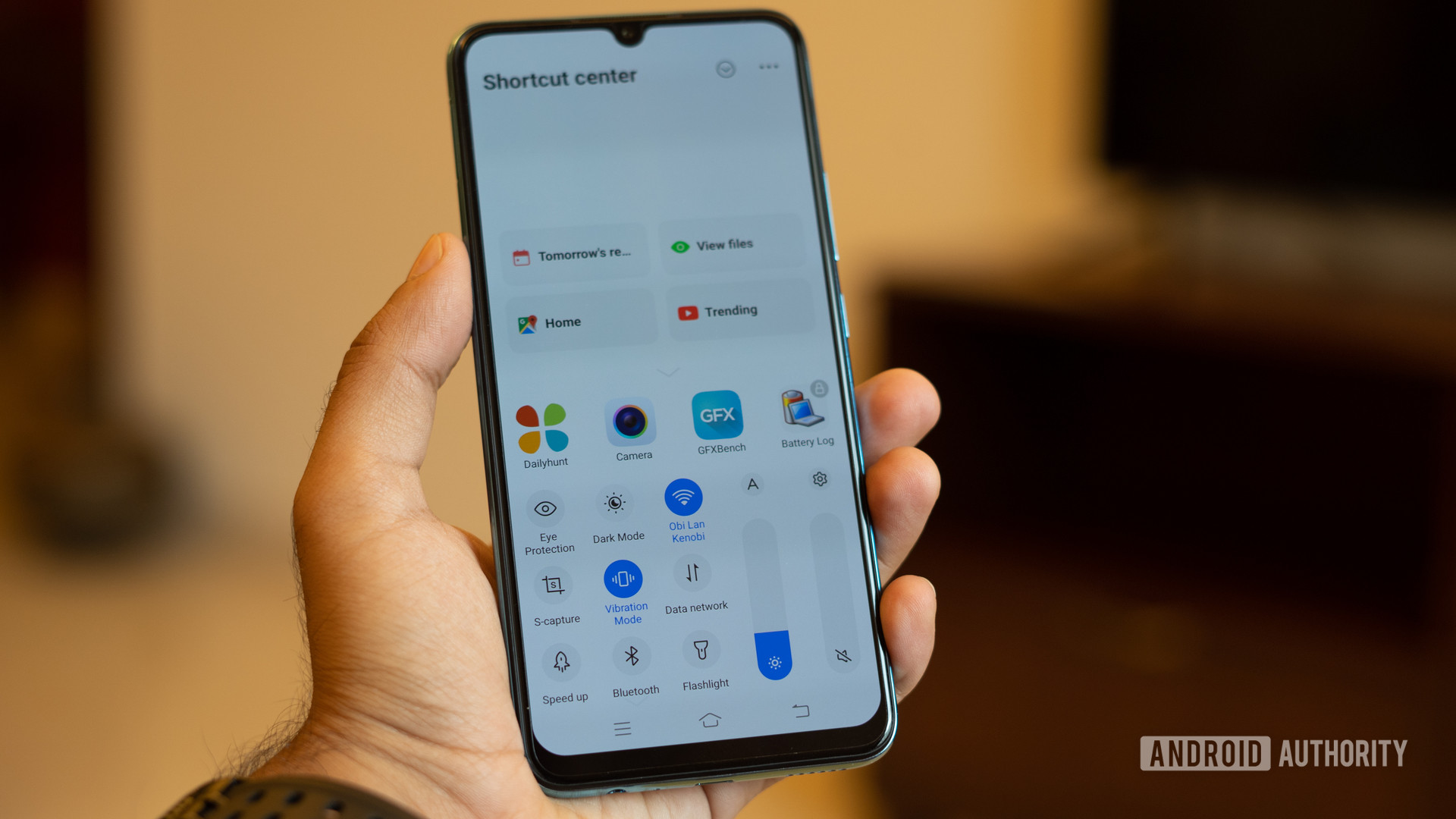
These two, in particular, have been split into separate sections of the screen. You now have to swipe up from the screen to access the shortcuts pane, which includes shortcuts to Google Maps, YouTube, and more. You can also jump to recent apps. Tapping the multitasking button pops open a more full-featured multitasking menu with shortcuts for split-screen view and to lock the app in memory.
Other noticeable changes include a widgets page on the extreme left and no app drawer option. There are ample customization options built in, including the ability to adjust the grid size, gestures, and an always-on display. The abundance of animations and vivo’s pre-loaded apps can be a bit off-putting. Between the App Store, Themes store, Game Center, Kids mode and Cloud sharing app, I counted well over 20 pre-installed applications. Definitely not the best experience.
Camera
- Primary sensor: 16MP, f/1.78, Sony IMX499
- Ultrawide sensor: 8MP, f/2.2, 120-degree FoV
- Depth sensor: 2MP, f/2.4
- Front camera: 32MP
On paper, the vivo S1 delivers a solid camera package with primary, ultra-wide, and depth sensors. The image processing, however, leaves a lot to be desired. As mid-range smartphones keep inching towards high-end imaging capabilities, the vivo S1 is a decidedly poor performer. Hands down, the vivo S1 has one of the weakest cameras I’ve come across this year.
There is a distinct lack of dynamic range in images shot from the primary sensor. The camera tuning bumps saturation drastically and images are generally soft on details. There is a noticeable shutter lag to the point that you’ll find it really hard to get a sharp image at first attempt. Switching on HDR results in halos around objects and an overzealous attempt to boost the dynamic range. The final results are unnatural looking.
Low-light imaging is also poor, with limited detail and a significant amount of noise. The front camera is a big selling point for vivo’s hardware, and the 32MP sensor is a naked attempt to up-sell the selfie camera. Once again, unfortunately, image quality falls apart due to overzealous post processing. While the images are bright and well saturated, they tends to be light on details. Bokeh mode produces average looking images with imperfect edge detection.

You certainly can’t fault the camera app for lacking features. Nearly every option you might need is presented here, the caveat being that it borders on feature overload. The sheer number of options is bound to confuse the average smartphone user and a whole lot of the extraneous features could be easily hidden away under a sub-menu.
Video quality isn’t great either, as the phone tops off at Full HD footage. There is no video stabilization on board.
Audio
The vivo S1 did well in our audio tests. The headphone jack produced loud and neutral-sounding audio. It’ll drive most regular earphones just fine. Basic earphones are provided in the box to get you started but you would do well by stepping up to a better pair.
The single speaker along the bottom edge gets loud, but audio quality leaves a bit to be desired. I wouldn’t want to use it for listening to music, but it’ll do just fine for calls or alarms.
Specifications
| vivo S1 | |
|---|---|
Display | 6.38-inch Super AMOLED 2,340 x 1,080 403 PPI 19.5:9 Schott Xensation 3D Protection |
SoC | Helio P65 MT6768 2 x Cortex A75 6 x Cortex A55 |
GPU | Mali G52 |
RAM | 4GB/6GB |
Storage | 64GB/128GB |
Cameras | Rear: Main: 16MP, f/1.78, Sony IMX499 Ultra-wide: 8MP, f/2.2, 120-deg FOV Depth sensor: 2MP, f/2.4 Front: 32MP, f/2.0 |
Audio | 3.5mm port AAC/LDAC/aptX/aptX-HD/aptX-adaptive |
Battery | 4,500mAh Non-removable 18W fast charging 18W charger included |
IP rating | N/A |
Sensors | Accelerometer Ambient Light E-compass Gyroscope In-display fingerprint Proximity |
Network | LTE FDD: B1/B3/B5/B8 LTE TDD: B38/B40/B41 WCDMA: B1/B2/B5/B8 TD-SCDMA: B34/B39 CDMA EVDO: BC0 GSM: B2/B3/B5/B8 CDMA 1X: BC0 |
Connectivity | microUSB Wi-Fi 802.11 a/b/g/n/ac, 2.4/5GHz Bluetooth 5.0 |
SIM | Dual Nano-SIM |
Software | Funtouch OS 9.0 Android Pie |
Dimensions and weight | 159.53 x 75.23 x 8.13mm 179g |
Colors | Skyline Blue, Diamond Black |
Value for the money
- vivo S1: 4GB RAM, 128GB ROM — 17,990 rupees (~$255)
- vivo S1: 6GB RAM, 128GB ROM — 19,990 rupees (~$283)
The vivo S1 is priced at 17,999 rupees (~$255), where it goes up against popular phones such as the Redmi Note 7 Pro and the realme X. Both devices have proven themselves as capable performers that deliver on most fronts.
Then there’s Samsung range of offerings such as the Galaxy M30 and M40, both of which bring fantastic displays, good battery life, and a well-optimized user experience at an approachable price point.
In fact, vivo’s own Z1 Pro comes across as a better package that strikes a great balance between aesthetics and general usability.
The vivo S1, despite delivering on design and general performance, has a few too many issues to be a clear cut winner against the competition.
vivo S1 review: The verdict
There’s a lot to like about the vivo S1, but a phone is greater than the sum of its parts. The hardware lacks finesse and the quality of materials is a definite downgrade over the premium glass and aluminium sandwiches we see at this price range.
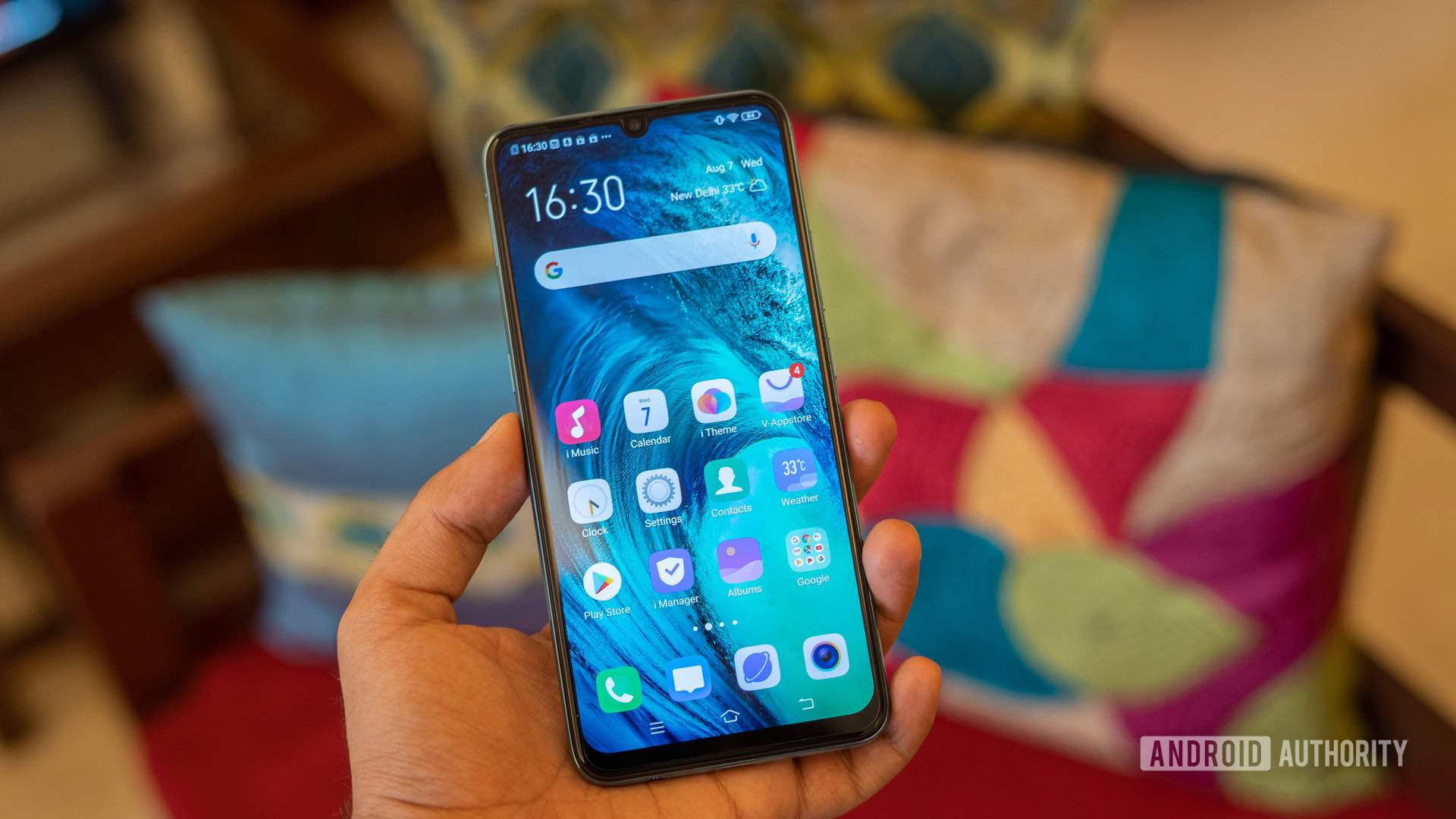
The poor camera quality can’t be dismissed either. Add to it the heavily customised software build and we are looking at a phone that just doesn’t stand out amidst the premium competition. I’d give this one a hard pass.